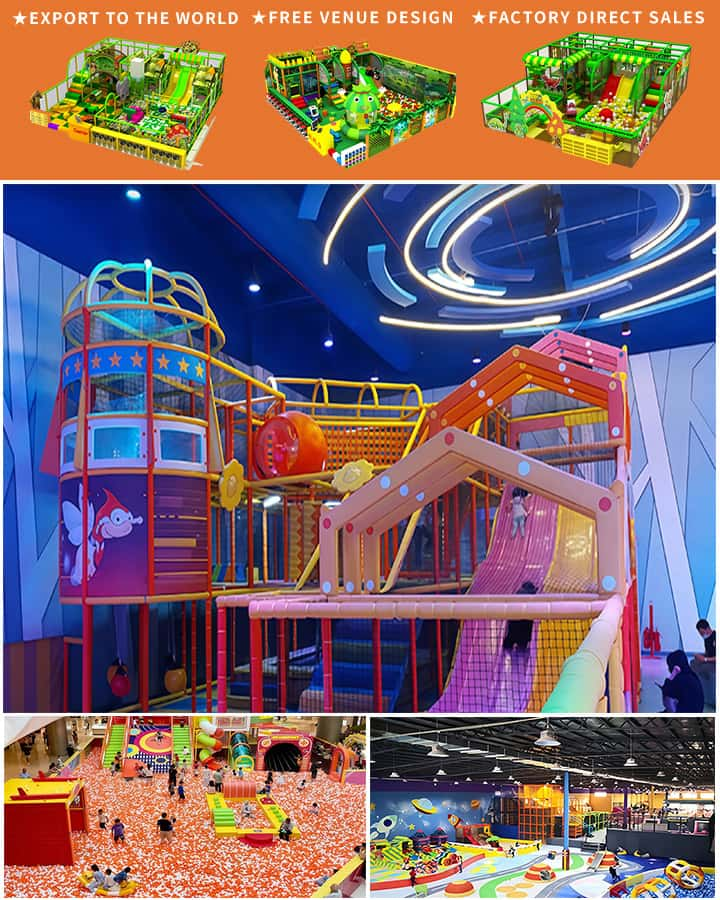Indoor playgrounds have gained immense popularity in recent years, providing children with a safe and entertaining environment regardless of weather conditions. Whether you’re a business owner looking to invest in an indoor playground or a parent interested in setting up a play area at home, understanding the costs associated with indoor playground equipment is crucial for budgeting and planning. This guide aims to break down the various factors that influence the cost of indoor playground equipment and provide tips for making informed decisions.
Types of Indoor Playground Equipment
Indoor playground equipment can range from simple items like ball pits and slides to more complex structures like climbing frames and obstacle courses. Here are some common types:
- Slides: These come in various shapes, sizes, and materials. Basic plastic slides can start around $100, whereas custom-built or commercial-grade slides can cost several thousand dollars.
- Climbing Walls: Depending on size and complexity, climbing walls can range from \(500 to over \)5,000. Features such as safety harnesses and interactive elements can increase the cost.
- Trampolines: Small trampolines suitable for indoor use can cost between \(200 and \)1,000. Larger models with added safety features may be pricier.
- Ball Pit Pools: These are relatively affordable, ranging from \(100 to \)500, depending on size and material quality.
- Play Structures: Multi-level play structures can be quite costly, often starting at \(1,000 and going up to \)10,000 or more, based on size and features.

Factors Affecting Cost
Several variables can impact the price of indoor playground equipment:
- Material Quality: Higher-quality materials such as durable plastics, non-toxic finishes, and reinforced structures tend to be more expensive but offer better longevity and safety.
- Size and Complexity: Larger and more intricate pieces of equipment will naturally cost more due to increased materials and manufacturing processes.
- Safety Features: Equipment equipped with advanced safety features like padded surfaces, rounded edges, and secure fastenings will generally be more expensive but are essential for minimizing injury risks.
- Customization Options: Custom colors, themes, and branding can add to the overall cost but may be necessary for creating a unique and engaging play environment.
- Shipping and Installation: Don’t forget to factor in the cost of shipping and professional installation, which can vary depending on location and the complexity of the setup.
Budget-Friendly Options
If you’re working with a limited budget, there are still plenty of options to consider:
- Second-Hand Equipment: Purchasing gently used equipment can save a significant amount of money. Just ensure it meets safety standards before use.
- DIY Projects: For those handy with tools, building your own indoor playground equipment can be a cost-effective solution. Many online tutorials and kits are available to guide you through the process.
- Modular Systems: Some companies offer modular systems that allow you to build and expand your playground over time. This can be a flexible and cost-effective approach.
Return on Investment (ROI)
For business owners, investing in high-quality indoor playground equipment can yield substantial returns. An engaging and well-maintained play area can attract families, improve customer satisfaction, and encourage repeat visits. Additionally, the initial investment can be justified by the durability and longevity of high-quality equipment, which reduces the need for frequent replacements.
Conclusion
Understanding the costs associated with indoor playground equipment is essential for making informed purchasing decisions. By considering factors such as material quality, size, customization options, and additional safety features, you can find the right balance between cost and quality. Whether you’re setting up a commercial play area or creating a fun space at home, careful planning and budgeting will help ensure a successful and enjoyable experience for all involved.




